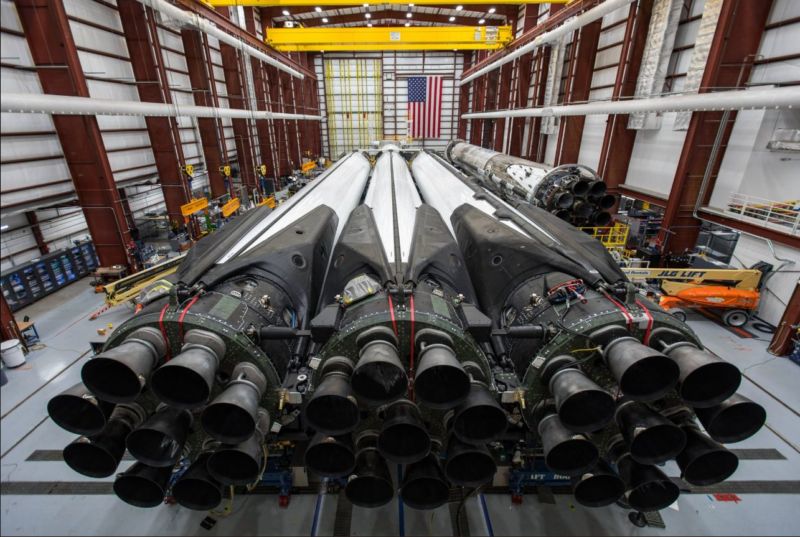
The Falcon Heavy made a rousing debut a little more than a year ago, launching from Florida and sending a cherry-red Tesla Roadster beyond the orbit of Mars. At the time, no one was quite sure how SpaceX would market the world's most powerful rocket, which did not seem to fit particularly well into any niche, especially after the company's own Falcon 9 rocket saw significant performance increases.
But in the 14 months since the large rocket's inaugural flight, Falcon Heavy has had a remarkable effect on the nation's space policy. In three key areas—national defense, science, and human exploration—the Falcon Heavy rocket has to some extent changed the discussion. As it turns out, the demand was there for a low-cost, heavy-lift booster.
Falcon Heavy's most immediate and tangible impact has been with national security missions. In June, only a little more than four months after the vehicle's debut flight, the US Air Force certified the rocket to fly its reconnaissance and communications satellites into orbit. The Air Force also announced that it had selected the Falcon Heavy to launch its classified Air Force Space Command-52 satellite later in 2020. The rocket offers the military access to all of the desired orbits for its spacecraft.
With a base launch cost starting at just $90 million, Falcon Heavy has also emerged as a contender for future NASA science missions to the outer planets. After saying for years that the Europa Clipper spacecraft could only launch on the Space Launch System (SLS) rocket, for example, NASA began talking about the possibility of launching it on a Falcon Heavy due to ongoing concerns about delays with the larger SLS booster. Planetary scientists have also said the rocket's mere existence has put price pressure on other boosters typically used for deep space probes.
Booster mate inside SpaceX's hangar at LC-39A ahead of Falcon Heavy’s static fire yesterday pic.twitter.com/G7ZPhOBkyj
— SpaceX (@SpaceX) April 6, 2019
More recently, the Falcon Heavy rocket has entered the conversation for human exploration. As the space agency considers all contingency plans to accelerate a human return to the Moon, NASA Administrator Jim Bridenstine has said there is a scenario in which a Falcon Heavy—albeit with a different upper stage—could launch the Orion spacecraft to the Moon. "There is nothing sacred here that is off the table," Bridenstine said. While the agency said it still prefers to use the larger but unfinished Space Launch System rocket, it has openly acknowledged that it now has a (much cheaper) back-up plan.
The potential market should only increase as Falcon Heavy demonstrates more success. Wednesday's launch will mark the launch vehicle's first commercial mission—the Arabsat-6A telecommunications satellite. The launch window opens at 6:35pm ET on Wednesday (22:35 UTC) and closes at 8:32pm (00:32 UTC) on Thursday. The weather forecast is good, calling for an 80-percent chance of favorable conditions.
After launch and first stage separation, Falcon Heavy’s two side boosters will attempt to land back at SpaceX’s Landing Zones 1 and 2 at Cape Canaveral Air Force Station, while the center core will attempt to land on the Of Course I Still Love You drone ship in the Atlantic Ocean. During the rocket's first launch in 2018, the side boosters made it, but the center core missed its drone ship landing.
SpaceX will provide a webcast of the launch, landing attempts, and satellite separation from the upper stage, beginning 20 minutes before the anticipated liftoff on Wednesday.
https://arstechnica.com/science/2019/04/falcon-heavy-making-only-second-flight-but-its-already-changing-the-game/
2019-04-10 12:10:00Z
52780262899980
Tidak ada komentar:
Posting Komentar